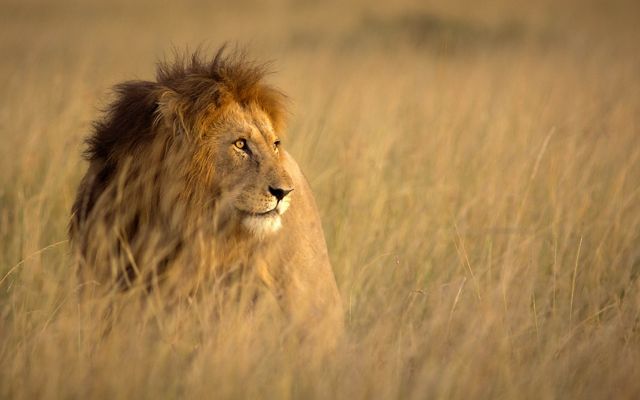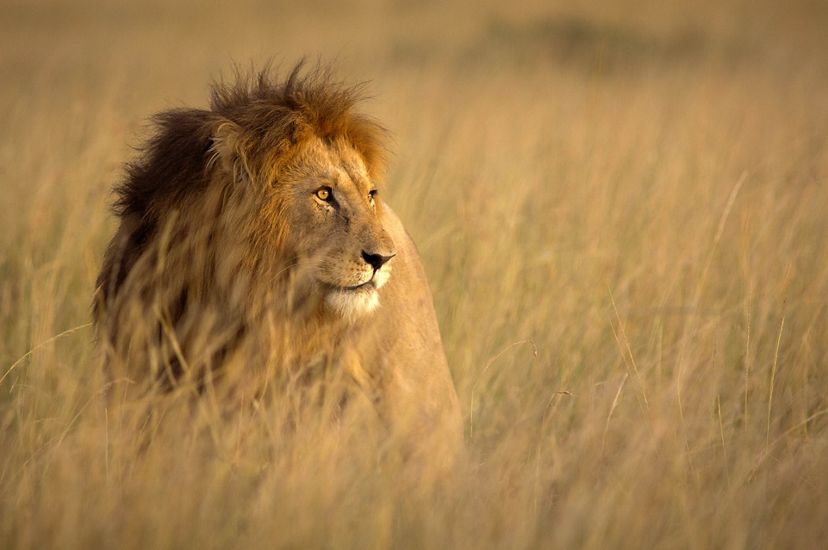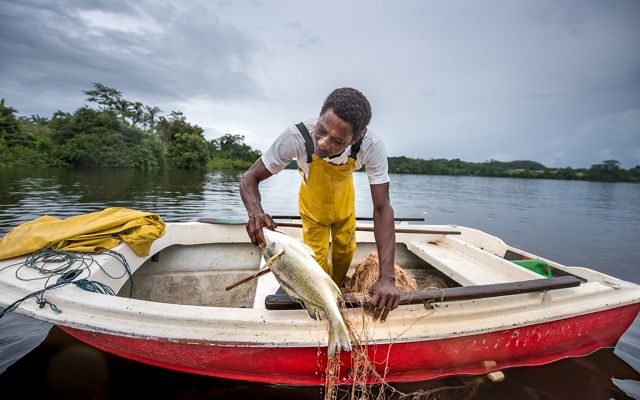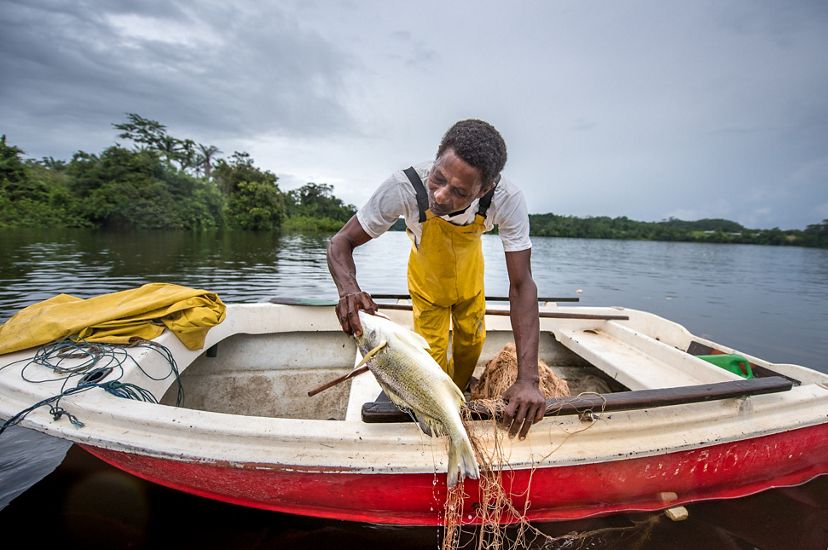
Enduring Earth
The Nature Conservancy and three major international organizations are teaming up to meet global conservation goals by 2030.
Summer 2022
Driven by the mounting threats of climate change and global biodiversity loss, private philanthropists, public funders and conservation groups around the globe are racing to protect 30% of the Earth’s land, freshwater and oceans by 2030. Targets set by the Paris Climate Accords, the Convention on Biological Diversity and the U.N. Sustainable Development Goals outline a path forward, but governments will need to act fast. The past decade was the hottest in history and more than 1 million species may be threatened with extinction in coming years, so timing is critical—and the challenge formidable.

A large male lion in high grass and warm evening light in Masai Mara, Kenya.

“When you look at these 2030 goals, they are big: It’s an area twice the size of India,” says Jeff Parrish, The Nature Conservancy’s global managing director for nature protection. “There is no way anyone can do it alone.”
In response, The Nature Conservancy, The Pew Charitable Trusts, World Wildlife Fund and the philanthropic enterprise ZOMALAB have thrown their collective expertise and resources behind Enduring Earth, a new joint effort to protect important habitats at the scale and pace necessary to effectively tackle climate change and biodiversity loss. The organizations will continue to act as their own entities, but they will collaborate on special large-scale projects through Enduring Earth. The effort marks a new approach—not just to financing environmental protection at a global scale, but also to working more closely with the people and communities that depend on ecologically important lands and waters.
Enduring Earth will model its projects similarly to how big-ticket infrastructure projects are managed: using a tool called “project finance for permanence” to put in place all the pieces necessary for success—like planning, funding, and long-term government and local community commitments—before a complex, large-scale protection project kicks off. Over the next decade, the team of organizations aims to raise more than $1 billion in private and public funding alongside financial commitments from host country governments and locally developed sustainable-financing mechanisms—for a total of $4 billion to launch a portfolio of 20 large conservation initiatives across the planet.
The approach has already been refined and tested over two decades in several large TNC- and WWF-led projects in Canada, Costa Rica, the Brazilian Amazon, Bhutan and Peru. Through the Great Bear Rainforest initiative, TNC supported multiple First Nations as they asserted authority over 19 million acres of their territories in the Pacific Northwest rainforest. The First Nations are now co-managing their natural resources with the provincial government and leading on protection and conservation initiatives. In Brazil, the WWF-supported Amazon Region Protected Areas initiative created a system of parks nearly 50% bigger than California, which has proved sufficiently resilient to withstand subsequent political turmoil in the country.


Turning this new collaboration into reality has required overcoming some longstanding differences between conservation organizations like TNC and WWF. “For 70-plus years, these organizations have been taught to compete, not to collaborate,” says Parrish. “This took a level of personal trust.”
“These partnerships rise and fall on the basis of relationships—and require a lot of direct, honest conversations,” says Carter Roberts, president and CEO of World Wildlife Fund in the United States. And, he adds, even as the individual partner organizations have joined together, they recognize the importance of maintaining the latitude to be able to challenge each other, for the sake of making the broader partnership even stronger.
The program’s success will also depend on getting national governments—many of which are racing to meet the 2030 pledges they are making under international climate and biodiversity agreements—to make durable, binding commitments to specific conservation programs within their own borders.
The Enduring Earth partners hope that bringing increased funding and their collective expertise to new conservation project areas can be the catalyst that helps governments quickly execute on their pledges to protect nature and address climate change.
“Sometimes these deals take years, so you wait for the stars to line up,” says Roberts, noting WWF’s involvement in negotiating protection for the Brazilian Amazon. “You look for openings in the world where you have a government that cares about these things—and is willing to make commitments that don’t just hold that particular administration accountable, but holds their successors accountable.”
Another critical component is the involvement of local communities in the creation of local economic development plans. Communities often depend on natural resources within potential protected areas, but activities like logging or fishing, when practiced unsustainably, can undermine the environmental integrity of such places. So supporting these communities’ efforts as they develop better management practices can ensure long-term benefits for ecologically critical areas and the people who depend on the resources therein.
“Helping develop the resilience of their private economies is one of the biggest things you can do to help ensure the sustainability of the protection itself,” says Ben Walton, who co-founded ZOMALAB with his wife, Lucy Ana.


Enduring Earth has already raised more than $400 million, and 10 of the proposed 20 Enduring Earth projects are moving through the pipeline. The first, a WWF-led project called Herencia Colombia (“Heritage Colombia”), will launch later this year to conserve 5 million acres of important habitat—an area about the size of Belgium—which will help Colombia meet its international biodiversity and climate commitments. The Conservancy will support this project with funding and with its own separate initiative to establish a new national park to protect lagoons, savannas, scrublands and knots of forest surrounding the Manacacías River.
The Pew Charitable Trusts will take the lead on a project to protect boreal forests in the Northwest Territories of Canada, where the organization has a long history. In Gabon, TNC is accelerating the country’s visionary commitment to protect 30% of its lands, oceans and freshwater habitats. The work will be backed by a $30 million commitment from the Bezos Earth Fund and additional forthcoming finance streams. The work will safeguard biodiversity and protect carbon stocks while creating new jobs in the country’s burgeoning green economy.
In Kenya, TNC is developing a landscape-scale project to support a mosaic of community, private and government conservation areas, which would benefit wildlife populations across some 43 million acres and also support the livelihoods of nearly a million households in the country’s rangelands and along its coast. And in Mongolia, TNC is working with herders and the government on a potential $170 million initiative to protect 35 million acres and strengthen management of another 69 million acres of ecologically important land.
Those projects will all help make real change on the ground, in the seas, in local communities and for the climate. But they’re already breaking down barriers and changing long-held attitudes between and within the participating organizations.
“You feel you have not only TNC behind your project, but also other big organizations like WWF and Pew, mobilizing their resources, their knowledge and their capacity to help move this along,” says Pilar Barrera Rey, TNC’s global director of durable protection strategies. “You’re sharing resources, financial and technical knowledge—and learning from each other. It makes a big difference.”